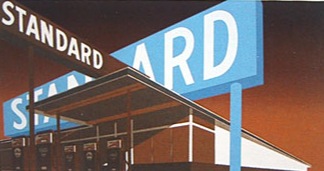 Andrew Sullivan has been unrelenting in his criticism of The New York Times for calling the Muhammad cartoons "callous and feeble cartoons, cooked up as a provocation by a conservative newspaper exploiting the general Muslim prohibition on images of the Prophet Muhammad to score cheap points about freedom of expression."
Sullivan slams NYT editors for being cowards on this issue and calls them out for publishing images of the Virgin Mary constructed out of dung -- but not the Danish cartoons.
Andrew Sullivan has been unrelenting in his criticism of The New York Times for calling the Muhammad cartoons "callous and feeble cartoons, cooked up as a provocation by a conservative newspaper exploiting the general Muslim prohibition on images of the Prophet Muhammad to score cheap points about freedom of expression."
Sullivan slams NYT editors for being cowards on this issue and calls them out for publishing images of the Virgin Mary constructed out of dung -- but not the Danish cartoons.
An underlying theme in this issue -- as pointed out by National Public Radio's Bob Garfield -- is the great lengths that Western European media have been sympathetic and accommodating to Muslims around the world and how they've basically lost patience with Islam for reacting this way.
Exactly how accommodating has the press been in Europe?
Sullivan points to a letter (via Andrew Stuttaford at National Review's The Corner) in the Times from Will Wyatt, former BBC chief executive, who addresses the inconsistency between the BBC's history of Islam and Christianity. Here's what Wyatt had to say:
Sir, I applaud the BBC's news treatment of the Danish cartoons (report, Feb 4). On its website, however, the cultural cringe is evident and double standards obtain. In its history of Islam we read: "One night in 610 he (Muhammad) was meditating in a cave on the mountain when he was visited by the angel Jibreel who ordered him to "recite" ... words which he came to understand were the words of God." This is written as fact, no "it is said" or "Muhammad reported". Whenever Muhammad's name is mentioned the BBC adds "Peace be upon him", as if the corporation itself were Muslim.
How different, and how much more accurate, when we turn to Christianity. Here, Jesus' birth "is believed by Christians to be the fulfilment of prophesies in the Jewish Old Testament"; Jesus "claimed that he spoke with the authority of God"; accounts of his resurrection appearances were "put about by his believers".
Go judge for yourself. Here is a link to the BBC's history of Muhammad and here is a link to the BBC's history of Christianity. Since when does a secular news organization follow the name of Muhammad with (peace be upon him), or even worse, the acronym (pbuh).
I've been wondering why fewer American publications have chosen to publish the cartoons, if simply for their news value. Offending someone certainly has not held them back from publishing gruesome and offensive photos in the past (think Sept. 11 photos or the aforementioned pieces of "art"). I chose not to publish the cartoons on my own blog for reasons of fear (sad, I know), and it's comforting for me to know that I was not the only one who held back for such reasons. Here's what The Phoenix had to say:
There are three reasons not to publish the Danish cartoons depicting Mohammed with his turban styled as a bomb and the other images that have sparked violent protests and deaths throughout Europe, the Middle East, West Asia, and Indonesia:
1) Out of fear of retaliation from the international brotherhood of radical and bloodthirsty Islamists who seek to impose their will on those who do not believe as they do. This is, frankly, our primary reason for not publishing any of the images in question. Simply stated, we are being terrorized, and as deeply as we believe in the principles of free speech and a free press, we could not in good conscience place the men and women who work at the Phoenix and its related companies in physical jeopardy. As we feel forced, literally, to bend to maniacal pressure, this may be the darkest moment in our 40-year publishing history.
Compare that explanation with what NPR's Ombudsman Jeffrey Dvorkin had to say (hint: "balance considerations of taste"). Are American media organizations running scared?
